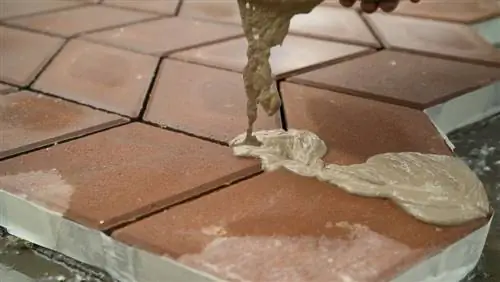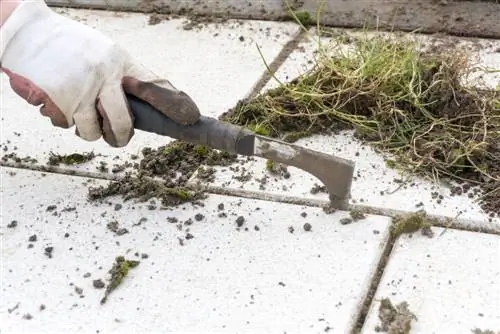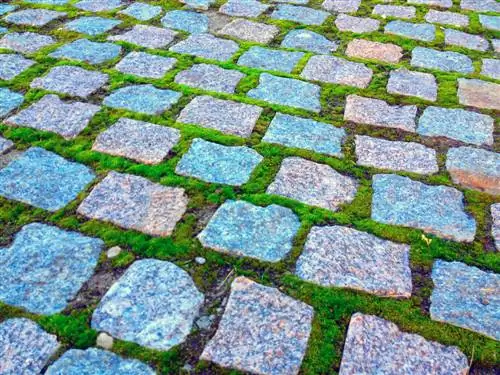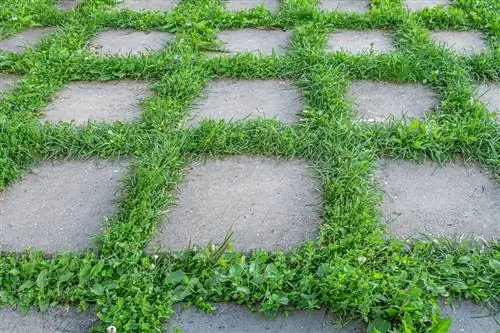- Author admin [email protected].
- Public 2023-12-16 16:46.
- Last modified 2025-01-23 11:22.
So that garden paths or paved driveways and house entrances are stable, joint filling is necessary. Gaps that are not filled make the surface appear unfinished. There are different materials that differ in price and offer different advantages.
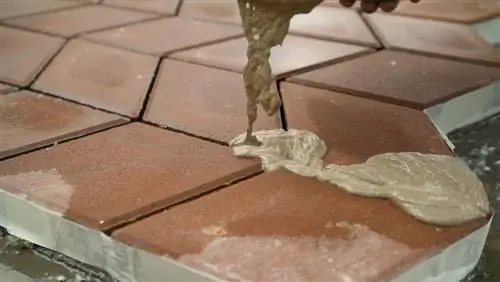
Which materials are suitable for filling paving joints?
To fill paving joints, you can use joint sand, quartz sand, rock powder or joint mortar. Each material has different properties and prices, so you can choose according to your needs and budget.
Materials for filling joints:
- Joint sand: cheap and easy to process
- Quartz sand: beautiful look and easy processing
- Rock powder: good stability and dry filling
- Joint mortar: optimal sealing
Joint sand
Sand has a coarse-grain structure and encourages rainwater to seep away. Lime or crushed sand are recommended and inexpensive products. They are processed when wet so that the particles seep into the gaps and solidify better. Joint sand has the disadvantage that wild herbs appear over time. Because of its low supporting properties, the filling material is suitable for large areas covered with cobblestones.
Quartz sand
This sand offers the advantage that you can keep the joints small. The grain size promotes good infiltration when grouting, which means that the laid stones are more stable. The substrate is often used because of its white appearance. However, it is more prone to getting dirty and is difficult to clean. The weed growth should not be underestimated.
Rock flour
This filling material is also known as bas alt flour and has a dark appearance. It has similar properties to quartz sand, although the supporting effect is higher. In contrast to sand, the rock powder is not filled wet. To minimize the risk of clumps forming, you should sweep the substrate dry. The disadvantage is a higher price.
Groout
This material is the most expensive filling. To avoid weed growth, you should use a synthetic resin-based paving joint mortar. Such a product seals the surface so that weed seeds cannot penetrate with their roots. The joints are easy to clean because the filling does not become soggy. Grout proves to be disadvantageous on large areas because water does not seep away sufficiently. The processing is complex and you have to pay attention to expansion joints when laying the stones.
Tip
There are special weed-inhibiting substrates. The Danish company Dansand has developed quartz sand and stone powder. These substrates have a high pH value and are based on the soil properties of weed-free substrates in nature.

